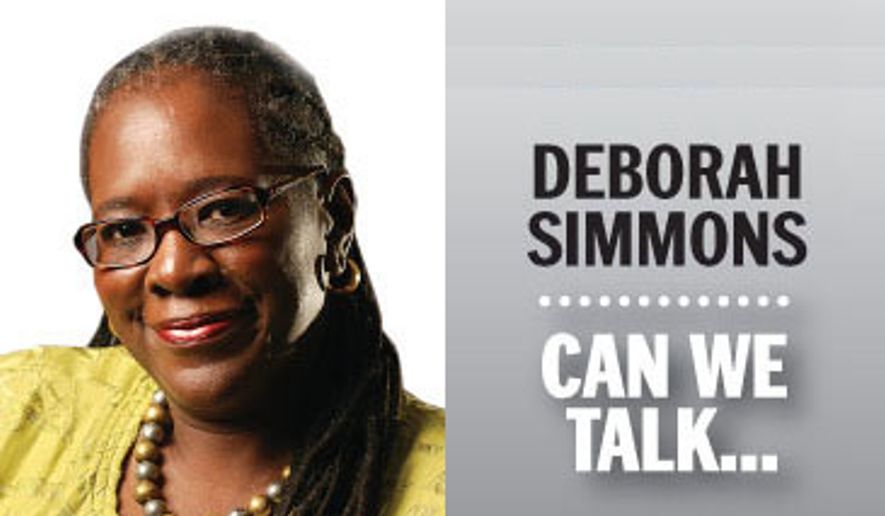ANALYSIS/OPINION:
The National Urban League released on Thursday its annual report, “The State of Black America,” and it contains a bit of really good news for black and Hispanic families around the Beltway.
The District, Maryland and Virginia region represents the nation’s highest median household income for blacks and whites, $64,663 and $108,254, respectively. The region also had the highest median household income among Hispanics, $65,736, and the lowest was $24,781 in Springfield, Massachusetts.
Now let’s look at the great equalizer — education. Verbatim from the report:
“The largest BlackWhite graduation gap was in Nebraska with an index of 65 percent. In Nebraska, 57.6 percent of Black high school freshmen graduate high school, compared to 88.8 percent of whites. The smallest graduation gap was in Vermont with an index of 111 percent, indicating that the Black graduation rate actually exceeded the white graduation rate. In Vermont, 100 percent of Black freshmen graduate from high school, compared to 89.9 percent of whites. In fact, Black students had a higher graduation rate than whites in three other states as well — Maine, Arizona and North Dakota — all of which have relatively small Black populations.
“Consistent with findings on the largest HispanicWhite gaps in reading and math proficiency, the largest HispanicWhite graduation gap was also in the District of Columbia, where the index was 67 percent. In DC, 58.5 percent of Hispanic freshman graduate high school, compared to 87.8 percent of whites. The smallest gap was in Maine, with an index of 117 percent. In Maine, 96.1 percent of Hispanic freshmen graduate high school, compared to 82.4 percent of whites. Hispanic students also had higher graduation rates than whites in six other states — Vermont, Alaska, Louisiana, New Hampshire, Hawaii and Arkansas.”
SEE ALSO: D.C. residents have third longest workweek, including commute
OK, so do blacks and Hispanics need to move to New England to begin to realize the American dream? Not necessarily.
As the report explains — and some school choice experts shout from rooftop — it’s not just what children know but when they know it.
Back to the Urban League report: “The largest HispanicWhite math proficiency gap was in the District of Columbia with an index of 27 percent and the smallest gap was in Louisiana where the index was 72 percent. Among DC 4th graders, 23.3 percent of Hispanics and 87.7 percent of whites tested at or above proficient in math. Among Louisiana 4th graders, 28.9 percent of Hispanic students and 40 percent of white students tested at or above proficient in math.
“Based on the progression of these gaps between grades 4 and 8, we find that both Blacks and Latinos saw less narrowing of math gaps than of reading gaps. BlackWhite math proficiency gaps improved in only 9 of 45 states, while HispanicWhite gaps improved in just 13 of 47 states. This limited progression is consistent with the fact that more advanced mathematical concepts are built upon concepts that are learned earlier. So, unless targeted interventions are made, students who struggle with math in grade 4 are likely to continue to face challenges in later grades.”
Black and Hispanic D.C. students lag behind their white counterparts in reading proficiency as well — and it’s not the melanin.
Most of the media reporting on the Urban League study had screaming, hopeless headlines that generally echoed what Urban League President and CEO Marc Morial said on CBS News: “Black America in crisis.”
SEE ALSO: D.C. charter school to receive Britain’s Prince Charles
Great sound bite and easy headline. But they both miss the point that needs to be underscored.
“[U]nless targeted interventions are made, students who struggle with math in grade 4 are likely to continue to face challenges in later grades.”
“The Urban League’s in-depth report shows that we have yet to turn the page on the lack of economic and educational opportunities in communities of color,” said Orlando Watson, a spokesman for the Republican National Committee. “Facing this reality, and armed with this empowering tool, the Republican Party continues its commitment to tackling these challenges with pro-job, pro-student and pro-family reforms.”
In a similar vein, I’m hoping Mr. Morial, Urban Leaguers and their supporters, especially the various congressional caucuses, practice what they preach and be ever mindful and vigilante of the National Urban League mantra: “to enable African Americans to secure economic self-reliance, parity, power and civil rights.”
• Deborah Simmons can be reached at dsimmons@washingtontimes.com.
• Deborah Simmons can be reached at dsimmons@washingtontimes.com.




Please read our comment policy before commenting.